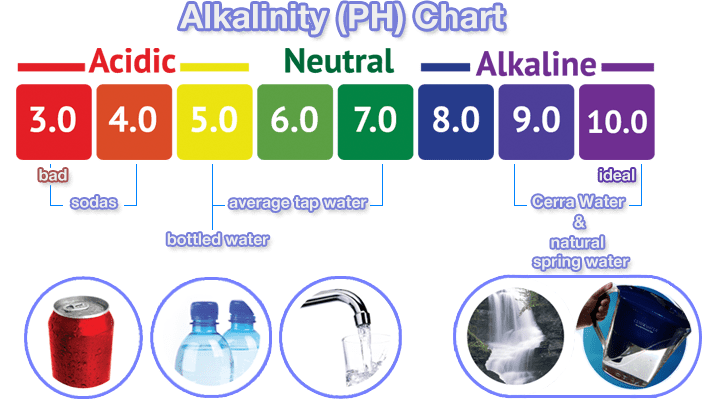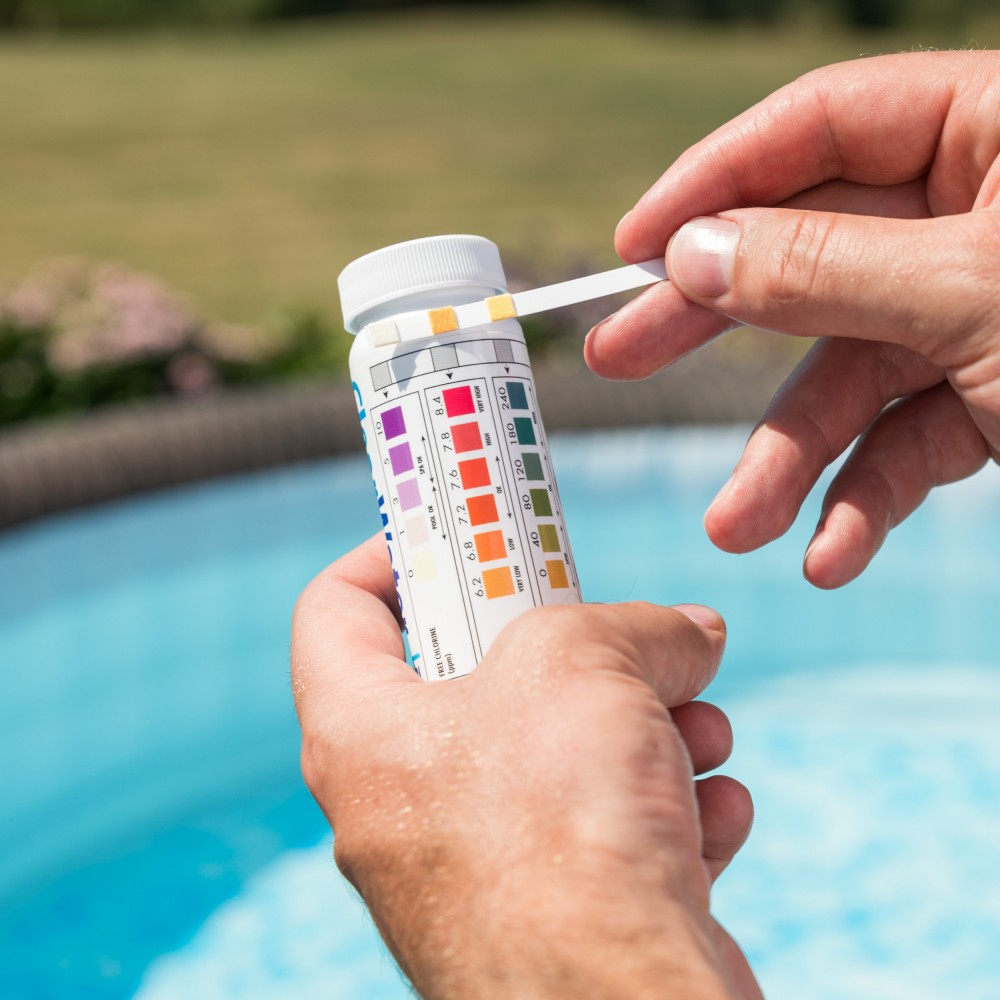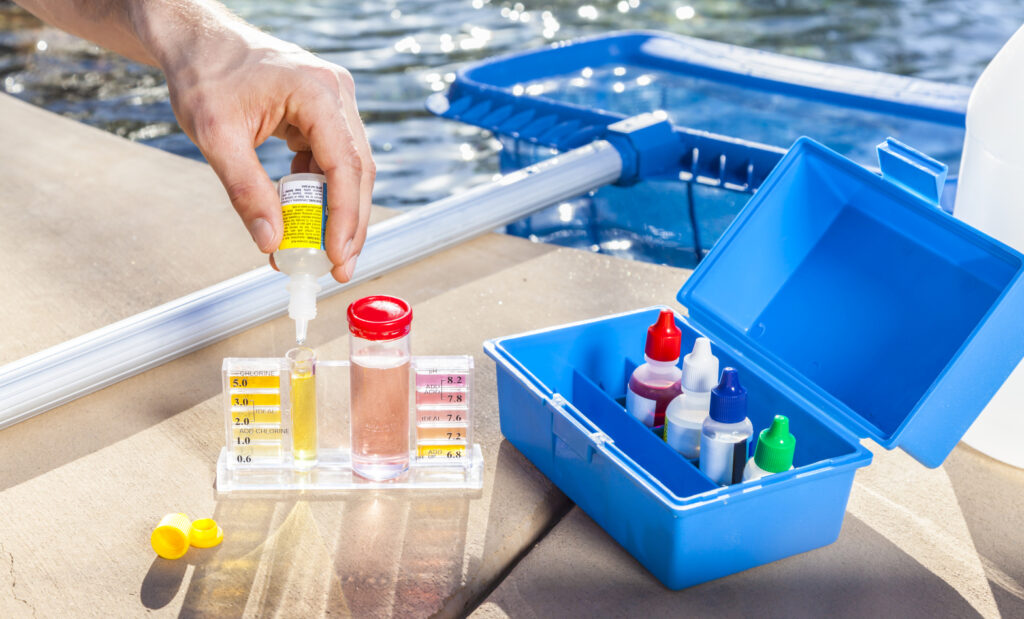Table of Contents
Getting the right balance of pH and alkalinity is quintessential for your pool water to remain free of harmful microorganisms. Still, before getting to balancing, you need to calculate the current alkalinity level. So, how to calculate alkalinity level of your pool?
It is not at all complicated. In this article, you will read a few simple steps to test the alkalinity of your pool. Dive in!
Importance of Calculating Pool Alkalinity
Are you wondering why do you need to calculate the alkalinity in the first place? It is all about the pH levels. Alkalinity can dramatically affect the pH balance of the water, which in turn changes the acidity level of the water.
If you have the alkalinity right, it will also help other chemicals such as chlorine, calcium, etc., work better. Most importantly, your pool shock will function best only when the water alkalinity is balanced, i.e., neither high nor low.
So, how do you know when the pool alkalinity level is balanced? The accurate level stands anywhere between 80 to 140 parts per million (ppm). Do not worry! You need not conduct any mathematical calculations to measure the alkalinity. Here is how to calculate alkalinity.

How to Calculate Alkalinity –3 Easy Methods
Calculating the alkalinity of your pool is no rocket science. You can do it all by yourself pretty quickly, without consulting any professionals. Here are 3 simple methods to calculate the alkalinity of your pool.
1. Test Strips
The easiest way to measure the alkalinity of your pool is through testing strips. These are paper pieces that you need to dip in water and check the color change. If you have previously used pH strips, you know how to go on with the entire process. Still, here is the step-by-step procedure of using alkalinity test strips.
Step 1: Completely dry-up your hands as touching the strip with wet hands may ruin it. Moreover, it may spoil the entire pack of strips.
Step 2: Take one strip, and fasten the cap of the bottle quickly. Please do not place the strip anywhere as it will get wasted.
Step 3: Holding the strip, dip your hand up to the elbow. Stay only for a second and pull it out.
Step 4: Let the strip stay for almost 15 seconds to allow complete reaction. You must ensure not to put it on a liquid surface or under the sunlight.
Step 5: Compare the color of the testing strip to the color chart given on the container of the strips. Doing this can help you determine the exact alkalinity level of your pool.
The alkalinity level may be low, high, or just right. You may need to raise or decrease the level to get it between the range of 80-140 ppm. Read on to learn how.

2. Test Kits
A ready-made test kit is another effective method of calculating the alkalinity level of your pool. Here is how to use an alkalinity test kit.
Step 1: Thoroughly wash the comparator tube to remove any residues. Otherwise, it may hamper the results.
Step 2: With the tube in your hand, dip it into the pool up to your elbow.
Step 3: You need to make sure that the tube has 25ml of water only. You can remove the excess water by flicking the line.
Step 4: Add 2 drops of the first agent, i.e., sodium thiosulfate, in the tube and mix it well.
Step 5: Mix 5 drops of the second agent—total alkalinity indicator. Shake the tube to mix the solution. The mixture must turn green in color.
Step 6: Now, you need to add the third agent, which is sulfuric acid. It is a crucial step as you need to add the drops one by one until the liquid color changed to red. Stop adding the drops once the solution turns red. Make sure that you count the number of drops you are adding.
Step 7: To calculate the alkalinity, you need to multiply the number of sulfuric acid drops by 10.
Voila! You got the exact alkalinity measure of your pool.
3. Electronic Testers
An electronic alkalinity tester is yet another useful tool to calculate the alkalinity of pool water. However, there is no specific method of using these devices. You will have to resort to the instructions given on the particular tester pack. On the whole, it should be pretty easy to use.
Things to Consider while Calculating the Alkalinity
Your pool water consists of several sanitization chemicals such as chlorine, calcium, and more. A high concentration of these substances can considerably impact your alkalinity results.
- Add a chlorine neutralizer to prevent the test strip from turning colorless or hampering alkalinity test results.
- Do not test the pool water if it is mixed with rainwater, floodwater, or water from other bodies. Refill the pool before conducting the test for the best results.
- Note that all these methods are for calculating the total alkalinity that includes cyanurate and carbonate alkalinity.
Now that you know the exact alkalinity measure of your pool, you will need to balance it. That is, in case it is higher or lower than the recommended range.

High Pool Alkalinity
If the alkalinity level of your pool water is high, it can cause ineffectiveness (low percentage) of chlorine. As a result, the water will be cloudy and difficult to swim in. Moreover, it will also affect the sanitization of your pool and lead to algae and bacteria formation.
Here are a few ways to lower the alkalinity level:
- Add muriatic acid to decrease the pH level (down to 7-7.2 units).
- Aerate the pool by activating the water pump for circulation.
Note: Do not forget to increase the pH back to 7.4-7.6 once you get the desired alkalinity level.
Low Pool Alkalinity
From stained walls to itchy eyes and dry skin, low alkalinity levels can be as problematic as high ones. It considerably decreases the pH level of your pool. Still, the good news is that raising the alkalinity level is relatively easy.
The chemicals that you need to add will depend on the level of other ingredients in the water.
- Add a stabilizer if the cyanuric acid is also low.
- Opt for sprinkling soda ash if both the alkalinity and pH levels are down.
- If all other contents are right, you can just add baking soda to raise the alkalinity.
To Sum up
Is your swimming pool your favorite spot in the house? You need to ensure that your best place does not harm you or your loved ones. Therefore, keeping a check on alkalinity, pH, and the overall water health is necessary to keep the contaminants at bay.
In this article, you get three simple solutions for how to calculate alkalinity. So, keep a regular check and maintain the health of your pool for a healthy you!
